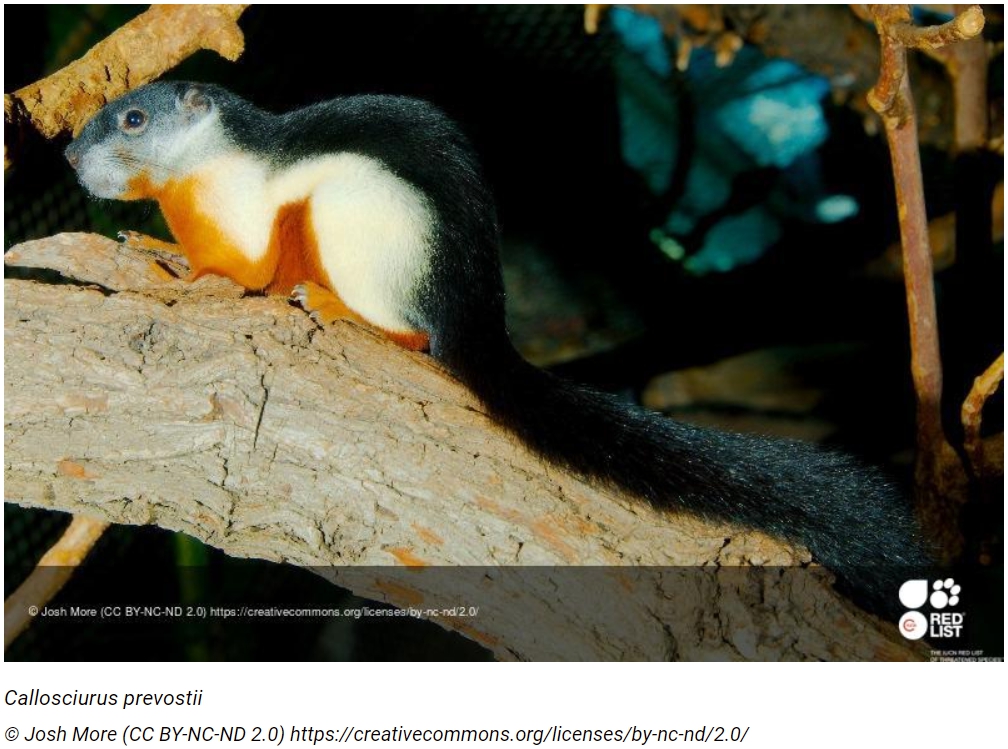| Citation |
Cassola, F. 2016. Callosciurus prevostii. The IUCN Red List of Threatened Species 2016: e.T3603A22253650. https://dx.doi.org/10.2305/IUCN.UK.2016-2.RLTS.T3603A22253650.en. Downloaded on 29 June 2021. |
Description |
JUSTIFICATION
This species is listed as Least Concern because of it is common and widespread, occurring in a number of protected areas, it is tolerant to some degree of habitat modification, and because it is unlikely to be declining at nearly the rate required to qualify for listing in a threatened category.
RANGE DESCRIPTION
This species is widespread in the southern part of Thailand, throughout Malaysia, Sumatra and Borneo, and on many smaller islands of Southeast Asia and Peninsular Malaysia (Corbett and Hill 1992, Oshida et al. 2001). It also has been found in northern Sulawesi where it has been introduced (Musser 1987).
DESCRIPTION
This species was the second most abundant of its genus found in a survey conducted by Saiful and Nordin (2004) in Peninsular Malaysia (Weng River sub-catchment), with a density of 3.29 ± 1.54 individuals/km2. In general, this species is found at low densities in unlogged forest in Malayasia: in Danum Valley, Sabah, Norhayati (2001) found 7.3 individuals/km2, while Zainuddin et al. (1996) found 2.98 individuals/km2 in Nanga Gaat, Sarawak. In general, throughout its range it is fairly common (Han pers. comm.) and stable.
HABITAT AND ECOLOGY
This is a diurnal and arboreal species (Saiful and Nordin 2004), descending only occasionally to ground to forage (Han pers. comm.). This species can tolerate secondary forest, and often enters fruit orchards (Han pers. comm.).
This species is found in the dense rainforests of the southern Thai peninsula, eating mostly fruit, but also some arthropods, and is considered a pest of oil palm and coconut plantations (Lekagul and McNeely 1988, Meijaard and Sheil 2007).
THREATS
The remaining habitat of this lowland species is very small. A substantial part of its native range has been replaced by plantations. In parts of Sarawak it is very heavily hunted for pets (Giman and Han pers. comm.).
CONSERVATION ACTIONS
It occurs in many protected areas. Saiful and Nordin (2004) state the need for further comparative study on this species abundance, density and distribution and its relationship to forest structure or habitat quality, spatially and temporally, in hill dipterocarp forest of Malaysia. |

